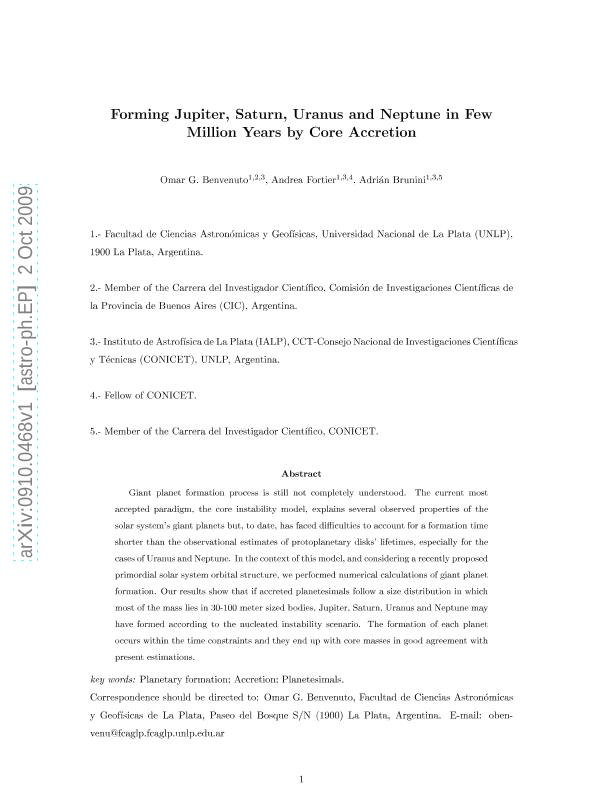Artículo
Forming Jupiter, Saturn, Uranus and Neptune in few million years by core accretion
Fecha de publicación:
12/2009
Editorial:
Academic Press Inc Elsevier Science
Revista:
Icarus
ISSN:
0019-1035
Idioma:
Inglés
Tipo de recurso:
Artículo publicado
Clasificación temática:
Resumen
Giant planet formation process is still not completely understood. The current most accepted paradigm, the core instability model, explains several observed properties of the Solar System’s giant planets but, to date, has faced difficulties to account for a formation time shorter than the observational estimates of protoplanetary disks’ lifetimes, especially for the cases of Uranus and Neptune. In the context of this model, and considering a recently proposed primordial Solar System orbital structure, we performed numerical calculations of giant planet formation. Our results show that if accreted planetesimals follow a size distribution in which most of the mass lies in 30–100 m sized bodies, Jupiter, Saturn, Uranus and Neptune may have formed according to the nucleated instability scenario. The formation of each planet occurs within the time constraints and they end up with core masses in good agreement with present estimations.
Palabras clave:
Planetary Formation
,
Accretion
,
Planetesimal
Archivos asociados
Licencia
Identificadores
Colecciones
Articulos(IALP)
Articulos de INST.DE ASTROFISICA LA PLATA
Articulos de INST.DE ASTROFISICA LA PLATA
Citación
Benvenuto, Omar Gustavo; Fortier, Andrea; Brunini, Adrian; Forming Jupiter, Saturn, Uranus and Neptune in few million years by core accretion; Academic Press Inc Elsevier Science; Icarus; 204; 2; 12-2009; 752-755
Compartir
Altmétricas




